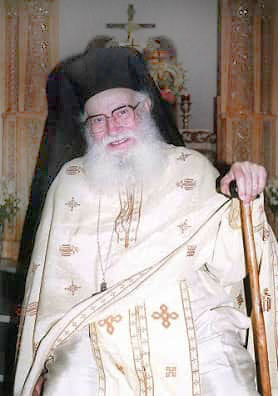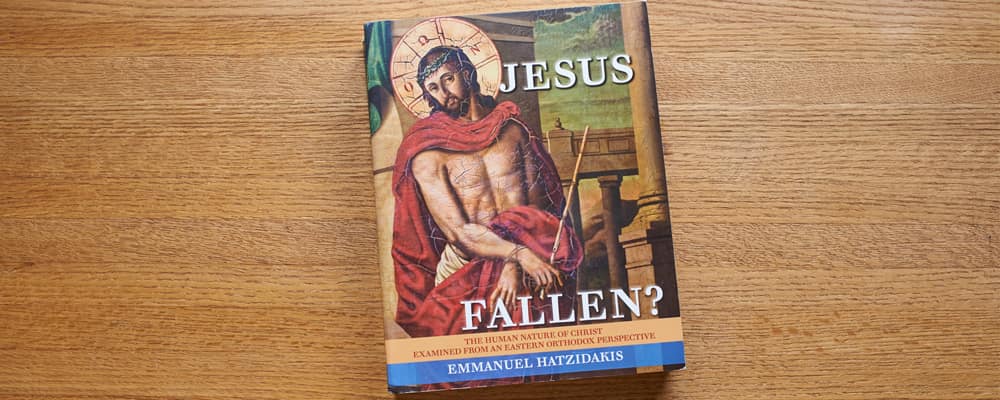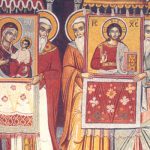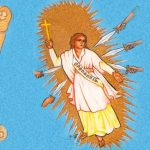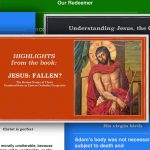THE ICON: ITS IMPORTANCE TO ORTHODOXY
The Icon: Its Importance to Orthodoxy - Fr. Athanasios Mitilinaios
Sunday of Orthodoxy, Homily Β154
Today, my beloved, the first Sunday of Lent, our Church celebrates her victory of the accuracy and the correctness of her faith and her traditions.
The Church has fought long to maintain the genuine interpretation of the revealed word of God, recorded in the Holy Scripture by God-inspired men, handed down as written works and teachings within the Church. One expression, one element of Orthodoxy among many others, is the icon as theology, and as the truth of Holy Scripture, the word of God.
Why the issue of the Icon is central
The issue of the icon was fought against for one hundred and twenty years by Iconoclasm, a heresy which broke out in Byzantium. The Seventh Ecumenical Council, however, eventually brought the icons back and settled the issue theologically.
The theology of the icon is an enormous and most important issue, so important that our Church honors the Fathers of the Seventh Ecumenical Council on the first Sunday of Lent, calling it “Sunday of Orthodoxy”. Although the issue of icons is one of many issues that constitute Orthodoxy, the Fathers considered it to be the most important.
Some are surprised to hear this and say, “Can one issue out of all the issues possibly be called the most important? Why icons?” Where, then, is the importance of the whole issue? It is, of course, the most important because of one aspect of theology, to which we owe our debt of knowledge to the icon.
The icon, my beloved, makes clear that God the Word really became a true man. How does the icon express this? In that we are able to depict Jesus Christ, and also the way in which we can represent the person of Jesus Christ, because here is the whole battle, here is the whole war, here is the whole struggle – if we are able to depict God.
Yes. It is possible for us to depict God. How so? Because He became human. The theology of the icon refers to and is based on the Gospel, and is of central importance to the entire Faith: “The Word became flesh.” (John 1:14) If, then, “the Word became flesh”, that is, as long as the Son of God became human, then it is possible to depict Him.
This is why one of the hymns from today’s Orthros service says:
“We now restore the icon of Your flesh, O Lord, and give it relative reverence, and by it show forth the great mystery of Your Dispensation; for You, O Lover of mankind, truly appeared in the nature of flesh unto us, not in seeming appearance as say the sons of Manis, who oppose You. Through Your icon we are led up to a longing and love for You.”
So you see that the icon constitutes a central place, because the accepting or not accepting the icon is to ultimately accept or not accept the truth of the taking flesh of the Son of God. This is why the issue of icons is central.
And if the Word really became flesh, then man can become Word [Logos], that is, divinized. I want us to understand, my beloved, that the theology of the icon is this: “The Word became flesh so that flesh becomes Word”, as the Fathers say. God became man in order for man to become god.
The question of whether Jesus is God was raised at the First Ecumenical Council. This raises the question of whether Jesus became human, that is, if he is a true man. This subject of the deity was raised at the First Ecumenical Council with the Arius and was fought against by the 318 Fathers and St. Athanasios.
And now the question is put forward: “Did God really become a human being? We recognize His divinity, but we doubt because of His humanity. It is precisely the opposite, which is why I told you that it was, in reality, fought against, again, first with the Docetists1, and then, once more, the Church battled Monophysitism at the Seventh Ecumenical Synod over the “icon” issue.
The issue is important, because if the Son of God really did not become man, then man cannot become god. That is, the theosis [deification] of man is impossible. That is, the salvation of man is impossible. If, however, God became man, if He partook of our nature, then this closeness of His to us offers us salvation.
Because of this approach to us, that is, His taking our nature and divinizing it and ascending with it into heaven and glorifying it, this nature of ours was also made able to be glorified in the person of the Word of God and we are all able to be saved. Therefore He is our forerunner in the heavens.
If, however, He did not become man, then God was God and remained God, and nothing more, and there remains a division of essences. In other words, there would be no union of essences. The union of essences was accomplished in the person of Jesus Christ. How? Because He truly became human.
So I repeat, once again, this is what the icon expresses. Because if I am able to paint the person of Christ as an Icon, it means that He became human. If he did not become human, how can the divinity be painted? It cannot be depicted, and it is not depicted. Do you see how important an issue this is, and that the icon is considered to express an enormous central truth?
But today we have forgotten this issue. We have forgotten and ignore the value of the icon, and in practice we deny those things which theologically occupied much of the First Ecumenical Council, and also the Seventh Ecumenical Council. We have forgotten the subject that Jesus Christ is God and perfect man.2 That is, Jesus Christ is God and Man [Theanthropos], and since He is God and Man – perfect God and perfect Man – man, therefore, is able to be divinized. Today we have forgotten this. Today, we have left this behind, precisely because we do not know, we have forgotten, we are forgetful of the theology of the icon.
I will also note that we think of Christianity as nothing more than a set of ethical rules which will improve our lives. Moreover, we ignore the resurrection of the dead, because we forget about the “body”, and that “our soul will go to Paradise”, even God’s Kingdom, because the Kingdom of God is where our being is complete. In other words, it is not souls only in the Resurrected life, but the soul with the body. Jesus Christ ascended to heaven with His human nature. We ignore this. And you understand, that by ignoring our theosis, the theosis of our entire being, we are no longer ordering our lives properly.
So, why not eat, drink and be merry? “The body is worth nothing compared to the soul,” we say. “Why not fornicate, then, if the body plays no part at all?” Because the body is a temple of the Holy Spirit, it is a temple of the Holy Triune God. The body is to be considered. The body will rise high up, and this is always expressed, I repeat, with the icon, because the icon expresses the theanthropic3 nature of Christ, that God really become human, and, consequently, I also will become a god by the grace of God.
Characteristics of the Icon
We will now say a few words about some of the characteristics of an icon. These characteristics are inexhaustible, and the issue of icons will not be covered by the few things we will say.
The icon is a language, an artistic language, an aesthetic language, if you will, which expresses our Church’s dogmas, that is, they express the Church’s dogmas in an aesthetic, artistic manner. Therefore it is Orthodox theology in form and color. Every Orthodox icon has two dimensions: the timeless dimension (historical) and the present dimension.
An icon first brings us closer to the historical event. For example, the Baptism of Christ is a historical event, and it is well known that history, that is, the history of mankind, cannot be evaporated and disappear. History cannot become ideology. History is history, it is events, and history determines our salvation, because our salvation will happen in space and time. Let us not forget that the mystery of the divine Economy, of God becoming man, is an event, it is history.
Pay attention, I will say it a second and a third time. We cannot evaporate the events. We cannot idealize history. History is history. These are the events. So if we remove history, we basically have no icon, because the icon expresses a historical event. The icon will tell the story. It expresses the historical event.
After bringing us closer to the historical event, the icon wants to connect the believer of each era with the historical event it depicts. How is the believer connected? Is this connection a connection in the memory, like with a photo album, when we look an event from the past? Or it it, as we say, a sentimental approach? To look at an icon to remember something, to feel something. My beloved, it is no more than an approach to the original event in the past! It means that every believer of every era, of every moment in history, approaches this historic event. It is approached not sentimentally, nor in remembrance, but in reality.
When, for example, we say in our hymnology: “The Virgin on this day gives birth to Him who transcends essence”4 or “Today You are baptized in the Jordan, O Lord”5 or “Today is hung upon the Wood”6 this “today” is not literal. It is not, as we would say, the historical Present, but it is today because today I am approaching the event. The event is not far from me. The fact that I am separated by time does not matter. I am not far away. I approach the event and the event approaches me. Therefore, every moment connects me to the original event, and this is what the icon shows me, this is what the icon expresses to me.
But we also have the other dimension, the timeless, the dogmatic. Within the illustrated historical event, for example, as with the Lord’s Baptism, the dogmatic element is shown clearly. We see the Son baptized, the Holy Spirit present, the Father revealing His Son in the world, testifying: “This is My beloved Son.” (Mt. 3:17; Mk. 1:11; Lk. 3:22) What do we have here? In the historic sense, the historic event of the Baptism, that Christ went to the Jordan, we have a dogmatic truth, a timeless truth. Something which stands apart from the historical event.
And so we see that the icon not only retains its historicity, but also presents us something new, something deeper. It presents to us a transfigured world and shows us the Kingdom of God. The icon is a window through which we can see what is neither in space nor time, and at the same time it shows us space and time. The icon is within time and the icon is outside of time.
The faces of the saints, if you will, when they are depicted, are real, but they are not depicted with their natural characteristics. They are real faces, human faces, truly, but at the same time, they are timeless, transfigured faces. They already belong to the realm of the Kingdom of God. In the Kingdom of God we are complete. It will be as you see me and I see you, but at the same time we will be transfigured. In what way will we be transfigured? From corruption to incorruption, from death to immortality.
This is what one sees when he looks at a icon of a saint. He approaches something which is on the one hand in time and on the other hand timeless. He approaches the saint, but the saint no longer lives in this present life. Therefore the saint attracts him to live a transfigured life, for our existence to be transfigured, to change already in this present life, so that we are completely transfigured on the Day of the resurrection of the dead.
As you have noticed, the saints in Orthodox icons always look straight forward. At most, they only look at a three-quarter angle, very slight. Never do we see the back of a saint. We see the face. Why? Because this shows that the believer has a connection with the saint. The sojourner in this life has a connection with the saint whose story is told in the icon. This connection has great significance; it shows that the saint is not estranged from the believers. The saint is not estranged. In the Liturgy we mention the saints; we have their relics in the Holy altar table; we commemorate the saints at the prothesis where we put portions for ourselves. The Saints climbed higher than us, they left us but they remain bound to us. This is why we see the saints painted, narrated, before us.
Moreover, an icon, my beloved, can also become – pay attention – a portal of mercy. How can it become a portal of mercy? When I know that if a door opens, I will find mercy there, I will find my bread there, I will find Grace there, I will find help there, I will find healing there, I knock on that door. The icon is a portal of mercy. Do not forget this. It is the phenomenon of miracle-working icons. We go in front of an icon, we pray and we seek, and the saint depicted gives us that which we ask for. We say: “Panagia, save me”, and not abstractly, of course, wherever we can we pray, but for all good intentions and purposes, we have the icon of Panagia in front of us and we say, “Most-holy Mother of God, save us.” Or we go to the icon of St. Demetrios: “Saint Demetrios, save me.” What does this mean? Will the saint give us a helping hand? Yes! The icon, the painting, we say, the window, was up to that point closed. Then it opened, and the grace of the saint went out. How does this happen? Listen to how this happens.
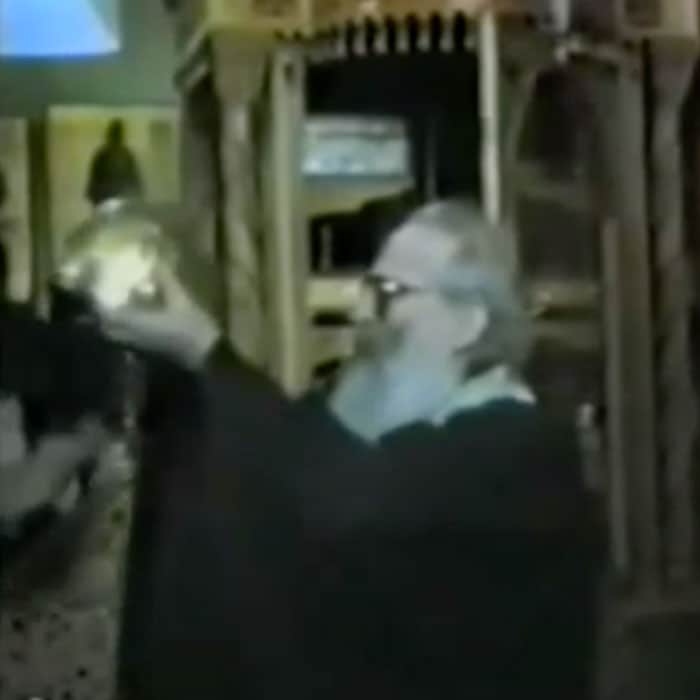
It is a teaching of our Orthodox Church that when the saint lived in this life, he had the Spirit of God. When he died and left this world, he was not separated from the Spirit of God. He has this Spirit even now where his soul is in Paradise. He was divided. His soul went to Paradise, always united with the Spirit of God, and his body was placed in the grave, where the Spirit of God is united with his body. For the Lord said, We will come to dwell in the man who receives us. (Jn 14:23) Pay attention, He did not say, We will dwell in His soul, but in him, in his being. Not in his soul only, but in his body and soul together. With death, then, man’s body is not separated from the Holy Spirit. Thus we have what we call “holy relics” which work miracles. Why do they work miracles? Because they are united with the Spirit of God.
It is also known that whatever a holy person touches in this world, gives grace, conveys grace. In the Gospel according to St. Mark, this happened with Christ. Pay attention to what he says:
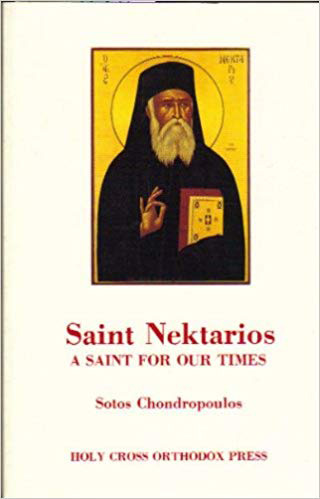 Read the miracle the Saint’s undershirt in Man of God: Saint Nektarios of Aegina. Translated by Peter and Aliki Los, Holy Cross Press.
Read the miracle the Saint’s undershirt in Man of God: Saint Nektarios of Aegina. Translated by Peter and Aliki Los, Holy Cross Press.
“And wherever He went, into villages, or cities, or the countryside, they laid the sick in the streets and begged Him that they might touch even the hem of His garment; and all those who touched Him were healed. (Mark 6: 56)
As it happened with Christ, my beloved, He now gives to the Apostles and Saints. Listen:
“...they brought out the sick into the streets and laid them on beds and mats, that at the least the shadow of Peter passing by might fall on some of them.” (Acts 5:15)
They were all healed. They took the handkerchiefs and aprons of the Apostle Paul, threw them on the patients and they recovered.7
Why? Because the objects that came in contact with their skin were sanctified. Thus, sanctified people, when their lives were hagiographed8, these icons are now miraculous. This is why, my beloved, icons work miracles.
Let us, however, emphasize something. Only Byzantine hagiography retains the prerequisites for dogmatic and moral teaching. Only the Byzantine icon. Western icons do not express anything. They express on the level of an event, and this, many times, is understood incorrectly [by the artist]. To make this clear, take, for example, Joseph with the Theotokos next to each other. They were not a couple. Why show them side by side and call it “The holy family”? They were not a couple. Byzantine hagiography shows the Panagia at the center of the icon and Christ next to her. Joseph? In a corner of the picture, down below, with his back turned, with his back facing the Virgin Mary and Jesus. What does this signify? That this Child is not his. You can see the difference. For this reason, I will tell you, my beloved, to always keep our homes, everywhere, worshipful places, everywhere, with Icons in the Byzantine style, which is dogma.
My beloved, we must not let it escape us that Christ is not only the Word of God, the Word of the Father, but is also an icon of the Father. Furthermore, we must not ignore the fact that man is an icon of Christ. Icons have a deep theology, as we have seen, and the more we study them, the more we find within their borders, without ever being able to exhaust what we find.
This entire world, this sensible world with its bright sunlight, is an icon of the future uncreated world. Moreover, inside the temple where we worship, the Liturgy is an icon of the heavenly Liturgy of the Saints, and communion with God. All the Christian symbols we have are icons of future good things. “They are a shadow of the the things to come,” says the the Apostle Paul to the Colossians (1:17). They are a shadow of the things to come.
This is why the Apostle writes:
“[The priests] who serve are a type and shadow of heavenly things; just as Moses was warned by God when he was about to make the tabernacle: ‘See,’ He said, ‘that you make all things according to the pattern showed to you on the mountain.’” (Heb. 8:5)
That is, how he was to make the Ark of the Covenant, and the other things. What did God give him there? Models. Patterns. Therefore, what were the tent, the temple, and the things constructed later? They were representations of the true, of the genuine, of the heavenly.
What am I saying? This life of ours, my beloved, is also an icon. “We walk by faith,” says the Apostle, “not by sight.” (2 Cor. 5:7) And what is faith? It is an icon. An icon. I do not see the reality, but I live through an intermediary, that is, through faith, not by sight. We do not have the reality. We have faith. We have the icon.
This is why our Church, my beloved, defeated the heretics and celebrates her victory today, which is Orthodoxy, with her projection of holy icons.
Translated by Anthony Hatzidakis, March 22, 2023, from a homily recorded by Mr. Athanasios K. and transcribed by Ms. Eleni Linardaki. Text in Greek: Aktines, Audio source: Arnion.gr
Ordering our publications helps us to continue translating and publishing new material for you.
Have you read our book on the human nature of Christ: Jesus: Fallen? The Human Nature of Christ Examined from an Eastern Orthodox Perspective
- Deoctism, a heresy that Christ did not really suffer bodily
- Seventh Ecumenical Synod
- divine-human
- Kontakion of Christmas
- Apolytikion of Theophany
- Read at Great Friday Orthros and Royal Hours
- for those who do not know the famous account of the healing by St. Nektarios with the sweater .... THE FIRST MIRACLE ATTRIBUTED TO SAINT NEKTARIOS: During the last days of his life, Saint Nektarios was in the room for the incurables of the hospital, among many poor patients who were at the point of death. Beside the bed of Saint Nektarios was a patient who had been paralyzed for years. As soon as Nektarios gave up his spirit, a nurse of the hospital, together with a nun who had accompanied him, began to prepare his holy body for transportation to Aegina for burial. They removed an old sweater from him and placed it for convenience on the bed of the paralytic and continued to prepare the body. Suddenly, the paralytic became well and rose from his bed, praising the Lord. This was the first miracle after the repose of Saint Nektarios. (www.aeginagreece.com/aegina-island/greece/agios-nektarios-church-monastery)
- αγιο-γραφία – holy-writing/picture
